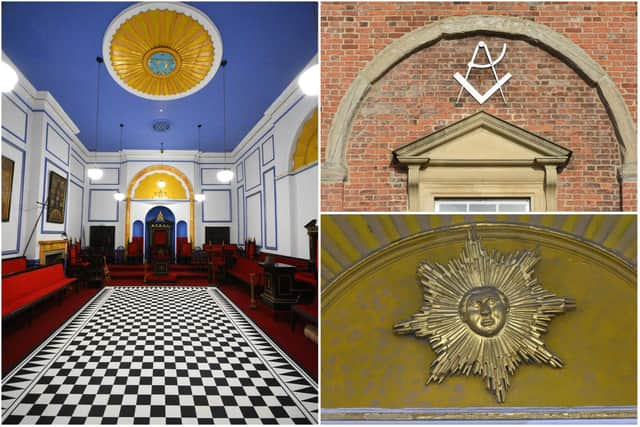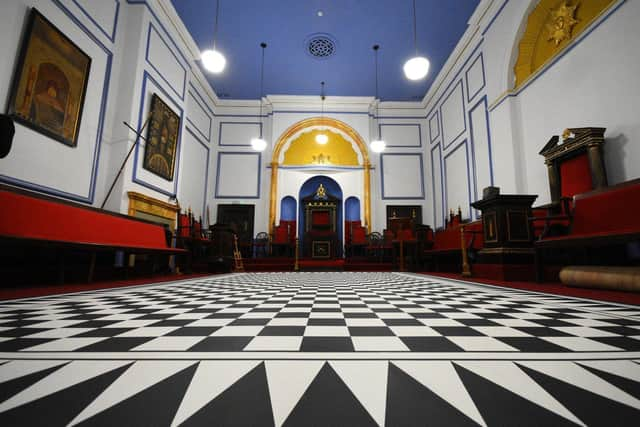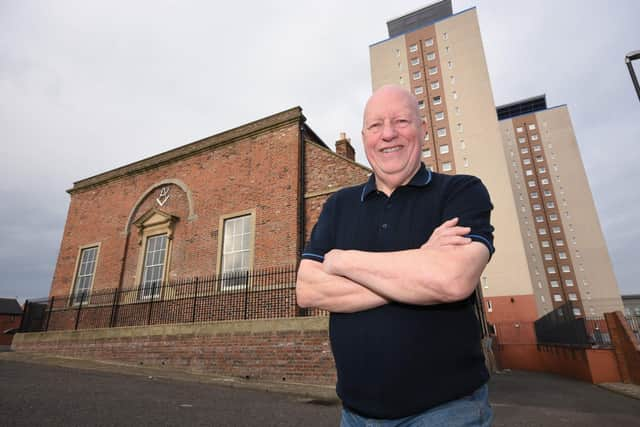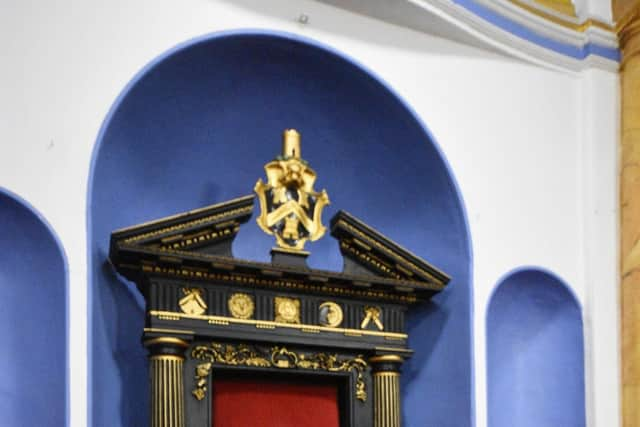See inside one of Sunderland's oldest buildings, Phoenix Hall masonic lodge in the East End, after major restoration project
and live on Freeview channel 276
Yet while the landscape of Wearside has evolved around it, Phoenix Hall, in the East End, remains much as it was when it was built in 1784-5.
Now, the intricate historic features at the hall, the oldest surviving purpose-built masonic lodge still in use by the Freemasons in England, have been given a new lease of life thanks to a major restoration projection.
Advertisement
Hide AdAdvertisement
Hide AdA real bridge to Sunderland’s past, the handsome Grade I-listed building – one of only two in the East End with such a listing, the other being the nearby Holy Trinity Church – is testament to the rich history of the East End, when the then town was growing in wealth thanks to the trade in coal, timber and shipbuilding.


The masonic temple was built and paid for by the Phoenix Lodge, at a then princely sum of £600, after their original temple in Vine Street burnt down. Phoenix Hall rose from the ashes of the previous Lodge, giving rise to its name.
Still in use today, where its original Lodge, and three others, meet monthly, it’s a hugely-historically significant cornerstone of the ancient fraternity.
Although the Hall has been extended and altered over the last 238 years, its original structure and interior has remained remarkably intact, with the original organ, ceremonial chairs and furnishings still in place.
Advertisement
Hide AdAdvertisement
Hide AdBut, structurally, it was in need of major repairs to its flooring, which was held together with the original 300-year old nails, windows, masonry and roofing.


Help to preserve this chapter of history came in the form of a grant of more than £200,000 from Historic England.
The repair work at Phoenix Hall forms part of Sunderland’s Historic High Streets Heritage Action Zone (HAZ) initiative. Led by Historic England, Sunderland City Council and partners, the scheme has been reinvigorating historic buildings, sparking interest in the city’s fascinating history and acting as a catalyst for regeneration.
The custodians of this important building, which is also known as Queen Street Lodge, due to its location, are Queen Street Heritage Trust.
Advertisement
Hide AdAdvertisement
Hide AdAnd chairman of the trust David Dorward says it’s great to see some of the city’s oldest buildings being given the TLC they deserve.


"When Historic England came to survey the building they said that of all the masonic halls in the country it’s the only one of its kind, it really is a one off,” he said.
"Like all buildings of this age, it has its problems, and it takes maintenance.”
He added: “Sunderland is one of the earliest places you’ll find Freemasonry in the country and it’s important to preserve these buildings.”
Advertisement
Hide AdAdvertisement
Hide AdThe Temple, or lodge room, is largely unchanged since 1785. Its harmonious proportions are based on the golden ratio, a concept well known in Freemasonry.


It’s a room steeped in symbolism, such as the rising sun above the Master’s Chair, the midday sun above the Junior Warden’s Chair and the moon above the Senior Warden’s Chair.
The furniture members sit on today predates the lodge itself, to the early 18th century, and comes from a former lodge in Gateshead, with some in the same style as the famous Chippendale.
Historic features continue in the basement where reclaimed timber from ships were used to make the joists and ‘witching’ markings are still evident, which were Ws carved into wood to ward off evil.
The Freemasons played a significant civic role in Sunderland in the eighteenth and nineteenth centuries. They led the construction and funding of many building projects including the Exchange Buildings (High Street East) and the first Wearmouth Bridge, which was vital for the economic and physical development of the city.
Their influence, and their ancient symbols, can still be seen in many of the city’s oldest buildings if you look close enough.
Members of the public can see inside this historic gem themselves on Heritage Open Days and by making an appointment for group tours with the Q.ueen Street Heritage Trust